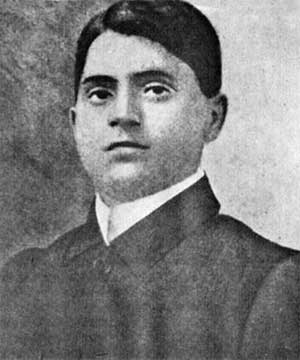Remembering Jatindra Nath Mukherjee on his birth anniversary
Jatindra Nath Mukherjee was a great indian revolutionary personality who made Britishers feel the power of Indian resistance and resentment against British imperialism and colonialism. Jatindra Nath Mukherjee was born in Jhenaidha district of Bengal in 1879. It is said that he came to be called ‘Bagha Jatin’ after killing a tiger single-handedly without any arms.
Jatin, a man with a strong sense of self-respect and national pride, came in contact with Aurobindo Ghosh and his Anushilan Samiti. As a college student Jatindranath joined a relief camp organised by Sister Nivedita, the Irish disciple of Swami Vivekananda. He was influenced by the Bhagavad Gita and the writings of Bankim Chandra. He was also inspired by Sri Aurbindo’s Bhavani Mandir and Swami Vivekananda.
In 1905, Bagha Jatin established an association called Chhatra Bhandar. Although it was established as a student cooperative store association, it served as an outfit for the revolutionaries of Bengal. Bagha Jatin inspired a large group of young revolutionaries. M.N. Roy and Bagha Jatin worked together extensively and soon M.N. Roy accepted Bagha Jatin as his leader.
Jatin was arrested in the Alipore bomb case but released soon. Then he was arrested again in connection with the Howrah conspiracy case and locked in Howrah jail. While in Howrah jail, he came in contact with fellow revolutionaries — belonging to various groups — who were operating in different parts of Bengal. After spending 11 months in jail, Jatin was acquitted and released from jail in 1911.
Jatin was in touch with Indian revolutionaries like Rash Behari Bose, Lala Har Dayal, MN Roy, Chempakaraman Pillai, Nair San, Shyamji Krishna Varma, who were working for Indian independence from overseas.
During the freedom struggle, Baghajatin and four of his aides were waiting for a huge consignment of arms to arrive at the Balasore coast for an armed rebellion.
The consignment never arrived; instead they found themselves chased by a police team headed by Charles A Teggart.
They entered Balasore but their hideout was soon raided by the police. While one died in the encounter that followed, two were hanged and the fourth was jailed. Baghajatin was critically wounded and soon succumbed to his injuries.
Bagha Jatin's German connection :
The year was 1914. World War I broke out. Most British India soldiers were sent to fight the war with the German forces. Just an estimated 15,000 soldiers were left to guard India. Jatin saw this as an opportune time to launch an insurrection against the British forces. Believing in the theory ‘the enemy of my enemy is my friend’, Jatin looked up to Germany.
In 1912, Jatin met the German Crown Prince in Kolkata and asked him for arms for an insurrection, in order to create a socialist government in India. The German Crown Prince promised to provide arms and funds for the proposed Indian insurrection against the British.
The task of obtaining funds and armaments were entrusted upon MN Roy, the key lieutenant of Jatin. In April 1915, Roy left India in search of German armaments which were believed to be en route, somewhere in the Pacific. The plan was indeed fantastic. Bagha Jatin had plans to sever communications between Madras and Bengal.
He died in Balasore hospital on 10 September 1915.







